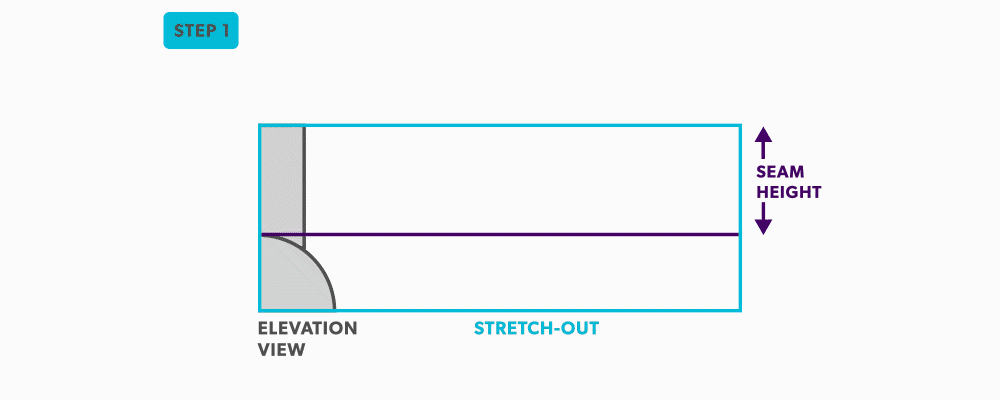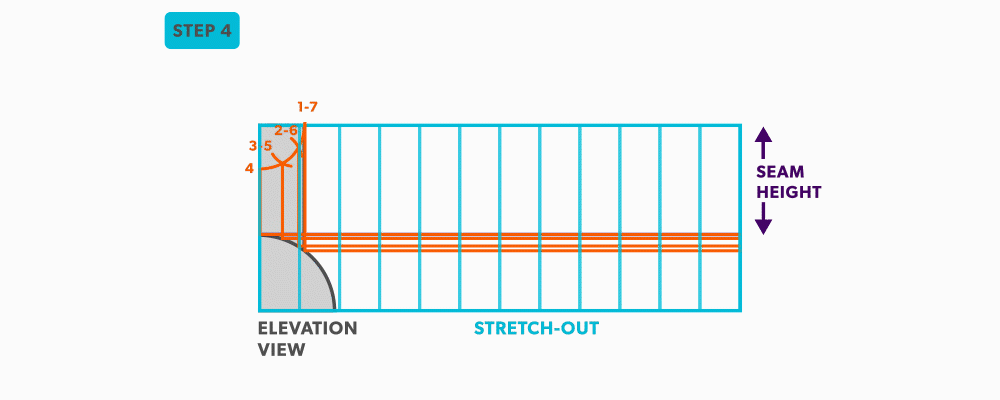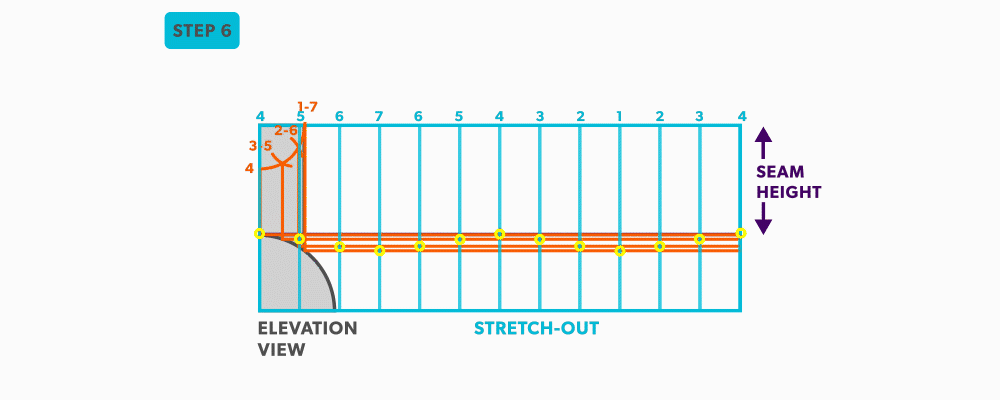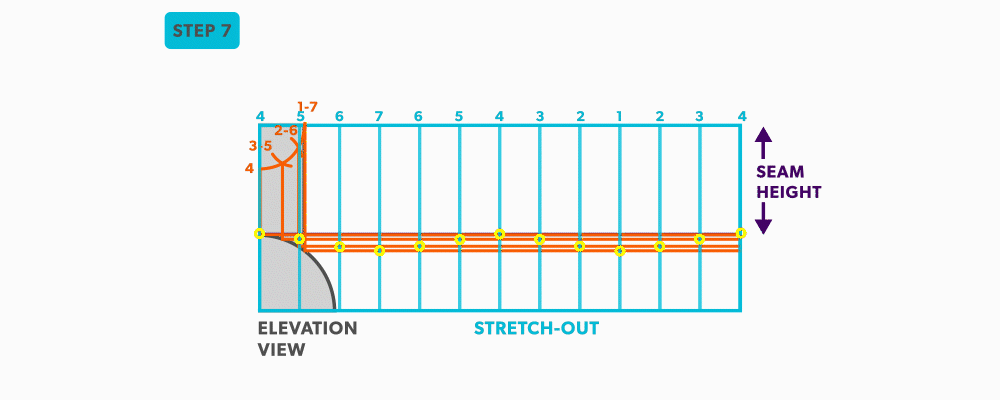Parallel Line Pattern Development
16 Unequal Diameter 90 Degree Tee-Shop Method
- Calculate the blank size. Use the stretch-out for one dimension (horizontal) and the seam height plus the radius of the pipe for the second (vertical) dimension. Add any seam allowances on before shearing the blank size.

- With your dividers, swing the radius of the pipe to 180° at the bottom of the blank. Then, from the same radius point, swing the radius of the tee and divide it into 6 equal parts (see Divide a Circle Into 12 Equal Parts) and label it. Remember that only the tee is divided. Also, notice that the half circles are symmetrical, so a quarter circle is the minimum required in this case.

- Project the divisions of the tee vertically into the pipe and where they intersect, project them horizontally.

- Divide the blank size into 12 equal parts (see Divide a Line Using a Ruler on an Angle). Remember to only divide the circumference, any seam allowance should not be included in the divisions.

- Label the stretch-out to match the profiles, starting at the seam.

- Start the pattern at your seam and follow the labeling. Notice the pattern of over 1, up/down 1, until you reach the last line and then it reverses.

- Draw the miter line on the pattern with a flexible curve

a line/plane level with the horizon. Flat, level
the distance from center to any point of the circumference, half the diameter
a line/plane straight up and down, vertically level (plumb)
a shape which has been “stretched out”, to take a perimeter and make it straight
a half of a plan view, drawn on the outside of an object
the shape of the object, still in 2D form
an intersection of 2 pieces- an irregular cut on the end of something

